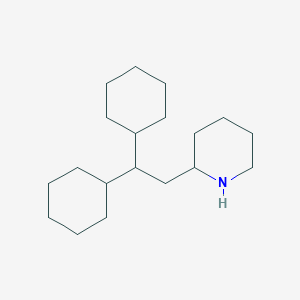Angina pectoris
Adult: In patients not responding to other anti-anginal: Initially, 100 mg daily, may adjust dose according to response at 2-4 weeks interval. Max dose: 300 mg daily in divided doses (up to 400 mg, if necessary).
|
Indications and Dosage
Oral
Angina pectoris Adult: In patients not responding to other anti-anginal: Initially, 100 mg daily, may adjust dose according to response at 2-4 weeks interval. Max dose: 300 mg daily in divided doses (up to 400 mg, if necessary).
|
|
Administration
May be taken with or without food.
|
|
Contraindications
History of porphyria. Hepatic and renal impairment.
|
|
Special Precautions
Patient with diabetes mellitus. Pregnancy and lactation.
|
|
Adverse Reactions
Significant: Hypoglycaemia, peripheral neuropathy, hepatotoxicity (e.g. elevation of liver enzyme, bilirubin), ventricular conduction disturbances.
Cardiac disorders: Rarely, torsade de pointes. Eye disorders: Papilloedema, diplopia. Gastrointestinal disorders: Nausea, vomiting, abdominal pain. General disorders and administration site conditions: Ataxia, weakness, gait disorder, lassitude, sweating. Immune system disorders: Urticaria. Investigations: ECG changes (e.g. prolonged QT interval, slight T-wave depression), significant weight loss. Metabolism and nutrition disorders: Anorexia, metabolic abnormalities, hypertriglyceridaemia. Nervous system disorders: Dizziness, headache, unsteadiness, tremors, extrapyramidal effects, seizures, paraesthesia, polyradiculoneuritis. Psychiatric disorders: Insomnia. Reproductive system and breast disorders: Reduced libido. Skin and subcutaneous tissue disorders: Rash. Vascular disorders: Syncope, flushing. Potentially Fatal: Rarely, hepatotoxicity (e.g. cirrhosis, hepatitis), hypoglycaemia. |
|
Patient Counseling Information
This drug may cause dizziness, weakness, syncope or ataxia, if affected, do not drive or operate machinery.
|
|
Monitoring Parameters
Monitor LFT regularly, weight, blood glucose concentration, and signs of hepatotoxicity or peripheral neuropathy.
|
|
Overdosage
Symptoms: Nausea, vomiting, ataxia, headache, hepatic damage, cardiac arrhythmia. Management: Symptomatic and supportive treatment. Monitor cardiac and drug level and serum blood sugar concentration. Protect airway and may administer activated charcoal via nasogastric tube for unconscious patients or have impaired gag reflex. Maintain adequate urinary output.
|
|
Drug Interactions
Increased plasma concentration with CYP2D6 inhibitors [e.g. SSRI (e.g. paroxetine, fluoxetine), TCA, neuroleptics, narcotic analgesics]. May increase risk of toxicity with adriamycin. May potentiate hypoglycaemic effect with anti-diabetics, β-blockers.
|
|
Action
Description: Perhexiline’s exact mechanism of action has not been fully elucidated, however, the drug appears to inhibit carnitine palmitoyltransferase, an enzyme responsible for myocardial fatty acid catabolism to glucose, this leads to improved myocardial oxygen utilisation, and anti-ischaemic effects.
Pharmacokinetics: Absorption: Well absorbed from the gastrointestinal tract. Distribution: Crosses blood brain barrier. Plasma protein binding: >90%. Metabolism: Undergoes extensive hepatic metabolism via hydroxylation by CYP2D6 to mono- and dihydroxyperhexilines. Excretion: Via urine; faeces. Elimination half-life: 2-6 days. |
|
Chemical Structure
 Source: National Center for Biotechnology Information. PubChem Database. Perhexiline, CID=4746, https://pubchem.ncbi.nlm.nih.gov/compound/Perhexiline (accessed on Jan. 22, 2020) |
|
Storage
Store below 30°C.
|
|
MIMS Class
|
|
ATC Classification
C08EX02 - perhexiline ; Belongs to the class of other non-selective calcium-channel blockers. Used in the treatment of cardiovascular diseases.
|
|
References
Anon. Perhexiline. Lexicomp Online. Hudson, Ohio. Wolters Kluwer Clinical Drug Information, Inc. https://online.lexi.com. Accessed 06/12/2017. Buckingham R (ed). Perhexiline maleate. Martindale: The Complete Drug Reference [online]. London. Pharmaceutical Press. https://www.medicinescomplete.com. Accessed 06/12/2017. Pharmacy Retailing (NZ) Limited Trading. Pexsig Tablet data sheet 12 October 2009. Medsafe. http://www.medsafe.govt.nz/. Accessed 06/12/2017.
|